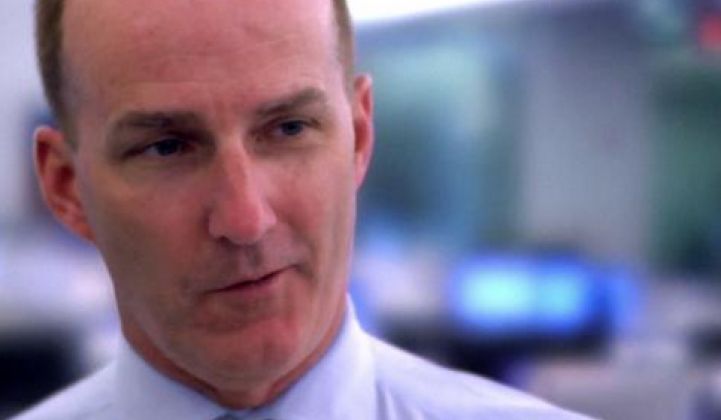"Resiliency" is a buzzword in the American utility industry that is becoming a business strategy in itself. But regulators and utilities may have trouble building business cases on resiliency if they're already having problems with the classic model, according to David Crane, CEO of NRG Energy.
“Think how shockingly stupid it is to build a 21st-century electric system based on 120 million wooden poles," Crane said during the fifth annual ARPA-E Energy Summit. "You can strengthen the system all you want, but if you accept that we’re in the first stage of adaptation, the system from the 1930s isn’t going to work in the long term.”
Crane is often introduced as a utility executive at conferences, a misnomer that sends shivers up his spine, he says. NRG may not be a regulated, vertically integrated utility, but it is an incumbent power producer that has about 53,000 megawatts of generation, most of which is oil, coal and natural gas. But it is also an energy company looking toward the future, with solar, energy retailers and electric vehicle networks all under the corporate umbrella.
Although much of NRG’s business relies on centralized power production that uses fossil fuels, Crane is ready for a new energy landscape that is vastly different.
“I don’t understand why it’s so shocking [to imagine a scenario] where the grid is, at best, an antiquated backup system to a different way of buying electricity,” he said.
Even NRG's peaking generation assets could become a liability in coming decades. “The dark secret of the power industry is that American homes waste 20 percent of energy,” Crane said. Energy efficiency will never get far if it involves just asking people to turn things off, but “we’re just at the brink” of automation.
Once homes can automatically shave energy use during peak, Crane argues that utilities will lose out on one of the highest-value products in the business: selling power to homes. Many utilities would likely argue that a flattening of demand would put less strain on assets and help to avoid firing up expensive peaker plants, but for power producers, “As demand flattens, we’re going to stop making money, and that sucks,” said Crane.
Crane’s vision of a world where the 100-year-old grid is nearly obsolete was not shared by the other expert sharing the stage with him, Richard Lester, head of the department of nuclear science and engineering at the Massachusetts Institute of Technology.
”These will be dramatically different times coming up,” Lester said of the innovation coming to the electric industry. “But I don’t think David’s vision of getting rid of the grid is the way we’re going to go.”
They both agreed that changes in demand for electricity, especially given the increasing role of energy efficiency, and the changes in how consumers use and produce energy at the grid’s edge, will drive transformation. But Lester saw another aim -- decarbonizing the power industry -- as perhaps the most significant driver. He noted that driving down carbon may not necessarily mean that the grid becomes obsolete.
“We can’t address carbon just relying on end-user innovation,” he said. “We’ll need big wind, big solar, big nuclear and big transmission,” but he questioned the ability of the U.S. to be a leader in terms of completing large energy projects in the future. “Innovators will not be the utilities,” added Lester.
Crane disagreed about the role of carbon in driving the future of energy production and delivery, but did agree about the dearth of resolve in the incumbent industry and government to transform how business is done.
“We lack the ability to do great things in this sector in this country,” Crane declared. “Ivanpah was something that should be celebrated,” he said of the large concentrated solar project that NRG was involved with. “Instead, it’s just people saying, ‘You killed a bird.’ There’s no vision or passion.”
Both speakers concurred that nuclear should have a place in the new energy economy. “If you are solving for climate change, your strategy starts with nuclear,” said Crane. “The only problem is, I live in the real world.”
He argued that to really bring down cost and increase safety, the power industry should build twenty or 30 nuclear plants at the same time with the same design, “not just one in Georgia.” But there is no support in the political domain or the private sector for that type of investment in nuclear, whether traditional or small modular reactors.
Beyond nuclear, Crane said that the public's perception of renewable energy technologies is vastly more positive than it was even a few years ago. “Green doesn’t mean a compromise of capability and price,” he said, adding that consumer products like Tesla S are “kicking ass.”
And forget about just solar and electric vehicles as disruptors. NRG is also betting on natural-gas generators for the tens of millions of homes that already have natural-gas lines. “Why do I have two expensive electric delivery systems into my home?” he asked. “I don’t want the one that gets ripped down in every storm.”



